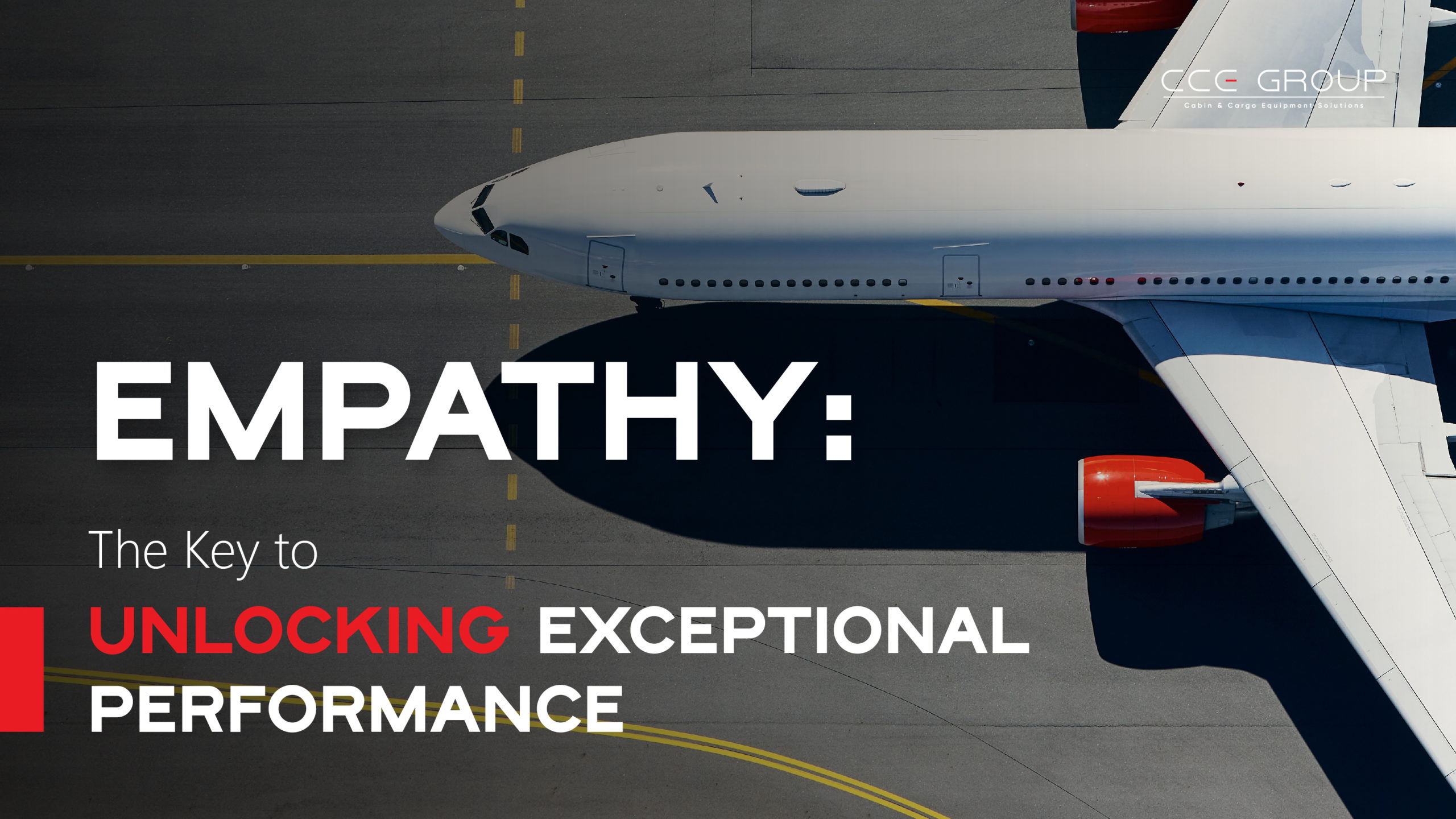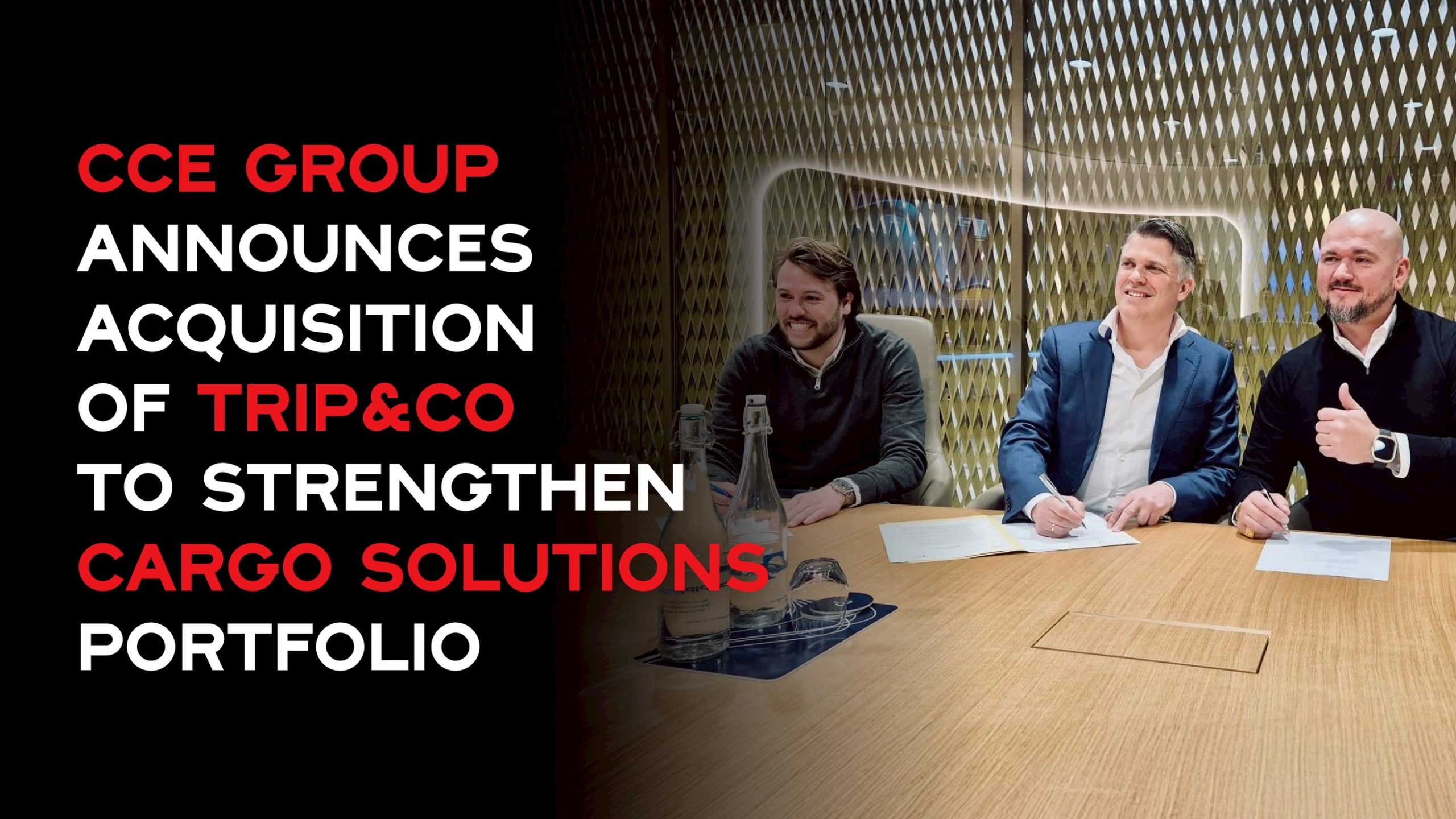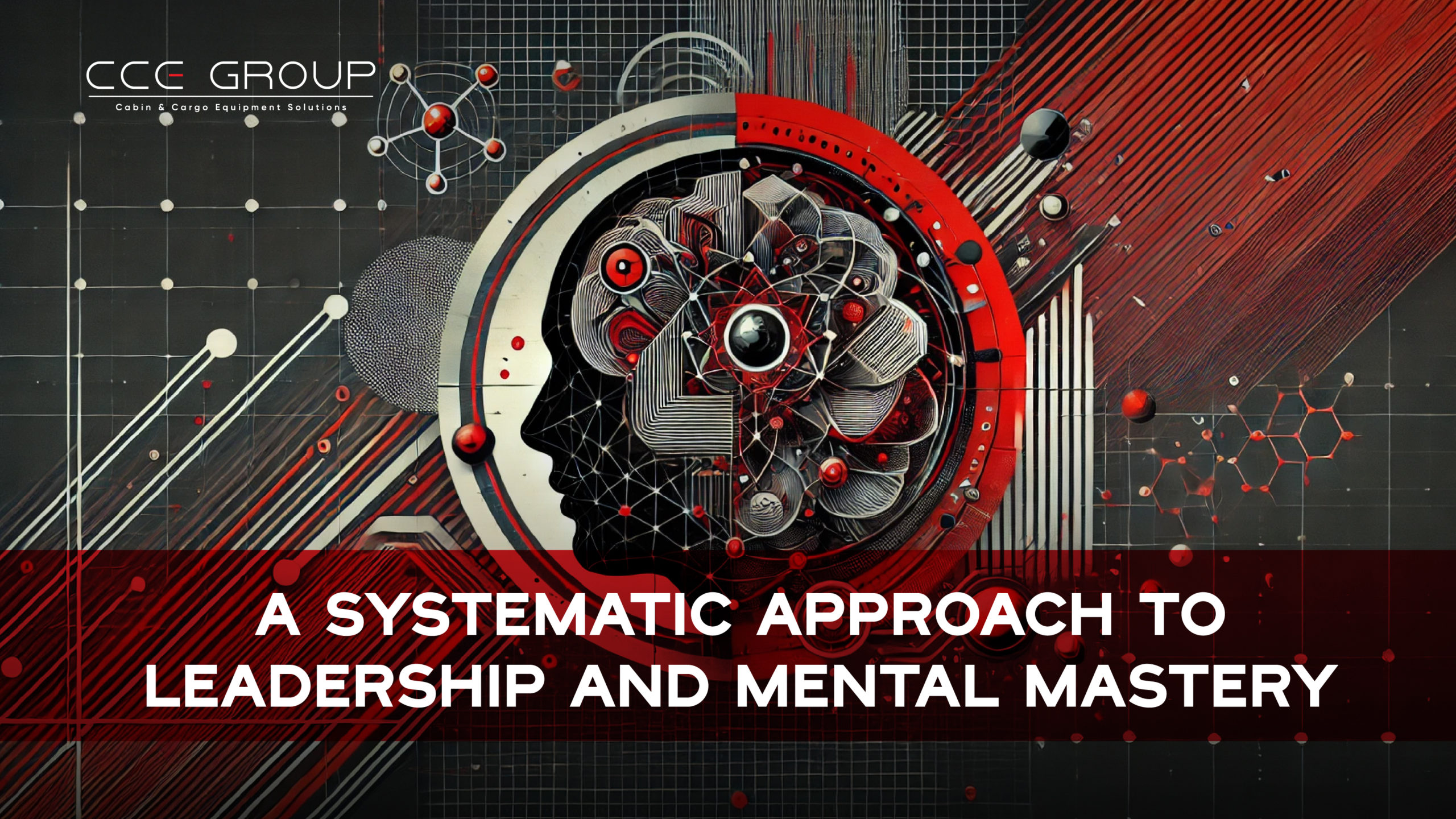In my experience leading businesses around the world, success isn’t just about setting strategies or hitting targets: it’s about understanding the people who actually drive the business. Empathy is central to how I lead, and it’s played a massive role in how CCE Group has so quickly established its strong positioning in the niche cabin and cargo equipment ecosystem.
But let’s be clear: empathy isn’t about being soft. It’s about really understanding your team: their motivations, their challenges, and their ambitions. Leaders who connect with their employees on a deeper level create a culture of trust and loyalty. When people know they’re seen and understood, they get more engaged and committed: not just to their work, but to the company’s broader mission.
At CCE Group, this approach has done more than just improve performance; it’s created an environment where employees feel empowered to innovate and go beyond expectations. This isn’t some fluffy management theory: it’s a practical strategy that gets real results. In this article, I’ll share how empathy drives our success and why it’s essential to leadership in the 21st Century.
Empathy is Not Sympathy
One common misconception in leadership is equating empathy with sympathy. Sympathy is the feeling of pity, where you observe someone’s situation from a distance and offer comfort. While well-intentioned, it can be counterproductive in business, creating a gap between leaders and teams. Empathy, on the other hand, involves connecting with people by understanding their motivations, frustrations, and perspectives. This allows leaders to offer constructive solutions rather than short-term emotional relief.
Sympathy can lead to decisions driven by emotion rather than logic, which may feel good in the moment but rarely leads to long-term results. Empathy enables leaders to solve problems at the root by addressing the underlying concerns and challenges, all while remaining aligned with business objectives.
For example, when dealing with a struggling employee, sympathy might lead to easing their workload out of pity. While this acknowledges their difficulties, it doesn’t help them improve. Empathy starts by listening and understanding the reasons behind their struggle: whether it’s a lack of resources or unclear expectations—and then guiding them towards growth, keeping performance and the company’s goals in focus.
Empathy allows leaders to provide feedback that is not just about pointing out flaws but is geared towards helping employees succeed within the broader organizational objectives. It fosters meaningful conversations, redirects efforts, and ultimately leads to better outcomes.
How I Use Empathy as a Leadership Strategy
At the core of my leadership approach is a genuine commitment to spending time with my team. I don’t just engage with them during meetings or when an issue arises—I make it a point to understand who they are as individuals. This means paying attention to the details that matter to them, whether it’s dropping them a short message for their birthday, enquiring about their family, or even their holiday plans. These small acts of acknowledgement and recognition aren’t just for show; they reflect a deeper and genuine commitment to knowing and truly understanding the people I work with from a 360-degree perspective.
Listening is key. When I sit down with someone, it’s not to dictate or manage, it’s to truly understand without judgment.
I ask questions to learn more about their challenges, their goals, and what drives them. Through this, I can develop a more comprehensive understanding of their motivations, which allows me to manage each person differently, according to what will help them thrive. This personalized management style is built on trust. My team knows that when I offer support, it’s not a temporary gesture, it’s rooted in a genuine desire to see them succeed.
That said, I don’t shy away from being hard on my people when necessary. If someone isn’t meeting expectations, I address it directly. But because I’ve taken the time to understand them as individuals, this feedback isn’t perceived as cold or detached. They know it’s coming from a place of shared goals: improving not only their performance but the company as a whole. This balance between empathy and accountability creates an environment where people feel valued but also driven to perform at their best.
As a result, retention at CCE Group is high. People stay because they know the support they receive is genuine and consistent. Loyalty isn’t something you can demand; it’s something you earn by showing people that you’re invested in their success. When employees feel supported and trusted, they not only stay longer but contribute more meaningfully to the company’s goals. This approach ensures the stability of the workforce and enables individual growth, which is key for any thriving organization.
Empathy and Innovation
Empathy doesn’t just improve team morale, it directly impacts key business outcomes like innovation, scalability, and profitability. At CCE Group, an empathetic leadership approach has fostered a culture of creativity and open communication, allowing employees to propose new ideas without fear of judgment. This psychological safety has led to innovations like our SmartULD solutions, helping us stay ahead of the competition.
By fostering an environment where employees feel safe to innovate, empathy drives problem-solving and creativity—both of which are essential in industries where continuous improvement and staying ahead of trends are critical to success. This cultural approach ensures that we don’t just keep pace but lead in our niche sector.
The Research-Backed Power of Empathy in Leadership
Empathy is not just a leadership buzzword, it’s a measurable skill that significantly impacts organizational success. Studies consistently demonstrate that empathetic leadership directly correlates with enhanced employee engagement, productivity, and overall performance. Far from being a “soft skill,” empathy offers tangible benefits that are essential for effective leadership.
A 2023 Ernst & Young report highlights that mutual empathy between leaders and employees boosts efficiency (88%), creativity (87%), and job satisfaction (87%). Empathy also leads to increased productivity (85%) and reduced employee turnover (78%). These statistics reveal that empathetic leadership is not only about making employees feel good but also about driving concrete business outcomes .
Similarly, research from McKinsey underscores the importance of empathy in creating psychologically safe workplaces where innovation can thrive. McKinsey found that empathetic leaders are more likely to foster environments where employees feel comfortable sharing ideas and contributing to the company’s growth .
Empathy also drives innovation and engagement. According to a report by Catalyst, 61% of employees with empathetic leaders report being innovative at work, compared to just 13% of those with less empathetic leaders. Additionally, 76% of employees with highly empathetic leaders are more engaged, compared to 32% in environments with less empathetic leadership .
Empathy and the Bottom Line
Empathy doesn’t just improve team morale, it directly impacts key business outcomes like innovation, scalability, and profitability. At CCE Group, we’ve seen first-hand how empathy fosters creativity, problem-solving, and open communication. When employees feel safe to propose new ideas without fear of judgment, they’re more likely to innovate.
For instance, the SmartULD solution was developed in a trusting environment where team members felt empowered to explore out-of-the-box ideas. This type of innovation helps us stay ahead of the competition and ensure that continuous improvement remains at the core of our business.
Moreover, empathy plays a critical role in scalability. The growth of an organization depends not just on expanding operations but on maintaining the core elements of its culture that drive performance. Empathetic leaders can guide this process by understanding the unique needs of their teams and ensuring that these elements remain intact as the organization grows. This human-centered approach allows for expansion without sacrificing operational efficiency or employee engagement.
Empathy also feeds directly into profitability. High retention rates reduce costs associated with turnover, hiring, and training, while a motivated workforce contributes more effectively to the company’s bottom line. Additionally, by fostering innovation and streamlining communication, empathetic leadership improves decision-making, driving better results across the board. When empathy is fully embraced as a leadership strategy, it creates a virtuous cycle of retention, engagement, innovation, and profitability. These factors are essential for companies seeking to scale and maintain a competitive edge in today’s fast-moving business landscape.
Accountability and Responsibility
While empathy lays the foundation for trust and innovation, pairing it with accountability ensures that these qualities translate into sustained success and measurable outcomes.
Accountability and responsibility are often misunderstood as the same thing, but they play very different roles in leadership. Responsibility is about the task itself—the “what” of the work. Accountability, however, is about ensuring the outcome—the “how” and “why” of achieving it. Responsibility focuses on who is assigned to do the work; accountability ensures that the work gets done, no matter what.
Some leaders assign responsibilities without providing clarity or follow-through, leading to confusion and frustration. Others avoid accountability altogether, pointing fingers when things go wrong. I’ve seen firsthand how these approaches can damage morale, erode trust, and stall progress.
Empathy is what bridges this gap. When we take the time to truly understand the challenges our teams face, we can set realistic expectations and provide the guidance they need to succeed. At the same time, accountability doesn’t disappear; it becomes a shared commitment rather than a one-sided demand.
Leadership, however, is rarely one-size-fits-all. At CCE Group, we’ve found that adapting accountability and responsibility to different contexts is critical for maintaining performance across diverse projects. During a high-pressure deadline, accountability often takes priority to ensure the team delivers results on time. Conversely, in more creative or exploratory projects, emphasizing responsibility allows individuals to take ownership of their tasks and innovate. Recognizing which approach is needed in a given situation is a skill that leaders must hone to maintain balance and drive success.
This balance also calls for judgment. Leaders must assess whether a situation requires more clarity around responsibilities or a stronger focus on accountability. Striking this balance ensures that both individuals and teams are aligned with broader organizational goals.
The dynamics shift further when leading other leaders. Delegating responsibilities while holding peers accountable requires trust and clear communication. Leaders leading leaders need to foster mutual respect while ensuring alignment with the organization’s mission. This dynamic can be challenging, but when handled well, it creates a ripple effect of trust and accountability across the organization.
I’ve learned that feedback is where this balance is most critical. If someone isn’t performing, I don’t shy away from addressing it, but I start by understanding their perspective. Maybe they lacked resources or misunderstood the priorities. By working through these challenges together, I can hold them accountable while helping them grow.
One example that comes to mind was a project that kept falling behind schedule. Instead of focusing solely on the missed deadlines, I sat down with the team to figure out what was happening. It turned out that some roles weren’t clearly defined, which led to duplicated effort and confusion. By addressing these issues and resetting expectations, we not only turned the project around but also highlighted how trust, rooted in empathy, can drive accountability and strengthen team dynamics.
Balancing empathy with accountability has taught me that leadership isn’t about being tough or lenient; it’s about being present, engaged, and willing to grow alongside your team.
Conclusion
In the fast-paced world of business, empathy is often overlooked as a “soft skill,” but in reality, it’s one of the most powerful tools a leader can wield. Leading with empathy creates a work culture where employees feel valued, trusted, and empowered to take risks and innovate. This, in turn, leads to improved performance, innovation, and retention: key drivers for long-term success.
By fostering a balance of empathy and accountability, leaders can create an environment where people feel supported and driven to contribute their best efforts. As leaders, embracing these principles not only enhances individual and team performance but ensures that our organizations are resilient and prepared to thrive in an ever-changing business landscape.
Empathy isn’t just about understanding others; it’s about unlocking potential and building the trust and accountability that lead to sustainable success. And that’s exactly what sets great leaders apart.






